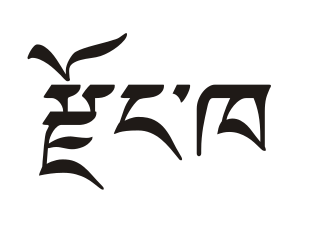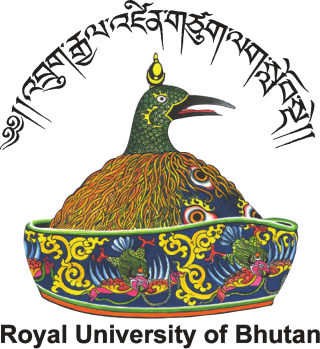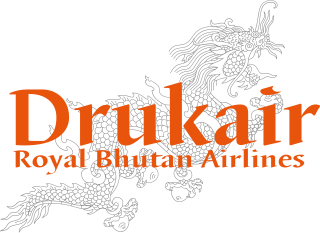Related Research Articles

American Sign Language (ASL) is a natural language that serves as the predominant sign language of deaf communities in the United States and most of Anglophone Canada. ASL is a complete and organized visual language that is expressed by employing both manual and nonmanual features. Besides North America, dialects of ASL and ASL-based creoles are used in many countries around the world, including much of West Africa and parts of Southeast Asia. ASL is also widely learned as a second language, serving as a lingua franca. ASL is most closely related to French Sign Language (LSF). It has been proposed that ASL is a creole language of LSF, although ASL shows features atypical of creole languages, such as agglutinative morphology.

International Sign (IS) is a pidgin sign language which is used in a variety of different contexts, particularly as an international auxiliary language at meetings such as the World Federation of the Deaf (WFD) congress, in some European Union settings, and at some UN conferences, at events such as the Deaflympics, the Miss & Mister Deaf World, and Eurovision, and informally when travelling and socialising.

Thimphu is the capital and largest city of Bhutan. It is situated in the western central part of Bhutan, and the surrounding valley is one of Bhutan's dzongkhags, the Thimphu District. The ancient capital city of Punakha was replaced by Thimphu as capital in 1955, and in 1961 Thimphu was declared as the capital of the Kingdom of Bhutan by the 3rd Druk Gyalpo Jigme Dorji Wangchuck.

Gallaudet University is a private federally chartered university in Washington, D.C., for the education of the deaf and hard of hearing. It was founded in 1864 as a grammar school for both deaf and blind children. It was the first school for the advanced education of the deaf and hard of hearing in the world and remains the only higher education institution in which all programs and services are specifically designed to accommodate deaf and hard of hearing students. Hearing students are admitted to the graduate school and a small number are also admitted as undergraduates each year. The university was named after Thomas Hopkins Gallaudet, a notable figure in the advancement of deaf education.

Dzongkha is a Sino-Tibetan language that is the official and national language of Bhutan. It is written using the Tibetan script.

Deaf culture is the set of social beliefs, behaviors, art, literary traditions, history, values, and shared institutions of communities that are influenced by deafness and which use sign languages as the main means of communication. When used as a cultural label, especially within the culture, the word deaf is often written with a capital D and referred to as "big D Deaf" in speech and sign. When used as a label for the audiological condition, it is written with a lower case d. Carl G. Croneberg coined the term "Deaf Culture" and he was the first to discuss analogies between Deaf and hearing cultures in his appendices C/D of the 1965 Dictionary of American Sign Language.

The music of Bhutan is an integral part of its culture and plays a leading role in transmitting social values. Traditional Bhutanese music includes a spectrum of subgenres, ranging from folk to religious song and music. Some genres of traditional Bhutanese music intertwine vocals, instrumentation, and theatre and dance, while others are mainly vocal or instrumental. The much older traditional genres are distinguished from modern popular music such as rigsar.

Jigme Dorji Wangchuck was the 3rd Druk Gyalpo of Bhutan.

Paro District is a district (dzongkhag), valley, river and town in Bhutan. It is one of the most historic valleys in Bhutan. Both trade goods and invading Tibetans came over the pass at the head of the valley, giving Paro the closest cultural connection with Tibet of any Bhutanese district. The dominant language in Paro is Dzongkha, the national language.

The Royal University of Bhutan, founded on June 2, 2003, by a royal decree, is the national university of Bhutan. It is the first and the oldest university in Bhutan.

Louis Laurent Marie Clerc was a French teacher called "The Apostle of the Deaf in America" and was regarded as the most renowned deaf person in American Deaf History. He was taught by Abbé Sicard and deaf educator Jean Massieu, at the Institution Nationale des Sourds-Muets in Paris. With Thomas Hopkins Gallaudet, he co-founded the first school for the deaf in North America, the Asylum for the Education and Instruction of the Deaf and Dumb, on April 15, 1817, in the old Bennet's City Hotel, Hartford, Connecticut. The school was subsequently renamed the American School for the Deaf and in 1821 moved to 139 Main Street, West Hartford. The school remains the oldest existing school for the deaf in North America.

Drukair Corporation Limited, operating as Drukair — Royal Bhutan Airlines, is the flag carrier of the Kingdom of Bhutan, headquartered in the western dzongkhag of Paro.
The history of deaf people and deaf culture make up deaf history. The Deaf culture is a culture that is centered on sign language and relationships among one another. Unlike other cultures the Deaf culture is not associated with any native land as it is a global culture. By some, deafness may be viewed as a disability, but the Deaf world sees itself as a language minority. Throughout the years many accomplishments have been achieved by deaf people. To name the most famous, Ludwig van Beethoven and Thomas Alva Edison were both deaf and contributed great works to culture.

Bhutan, officially the Kingdom of Bhutan, is a landlocked country in South Asia situated in the Eastern Himalayas between China in the north and India in the south. With a population of over 727,145 and a territory of 38,394 square kilometres (14,824 sq mi), Bhutan ranks 133rd in land area and 160th in population. Bhutan is a constitutional monarchy with a king as the head of state and a prime minister as the head of government. Vajrayana Buddhism is the state religion and the Je Khenpo is the head of the state religion.
Manually coded languages (MCLs) are a family of gestural communication methods which include gestural spelling as well as constructed languages which directly interpolate the grammar and syntax of oral languages in a gestural-visual form—that is, signed versions of oral languages. Unlike the sign languages that have evolved naturally in deaf communities, these manual codes are the conscious invention of deaf and hearing educators, and as such lack the distinct spatial structures present in native deaf sign languages. MCLs mostly follow the grammar of the oral language—or, more precisely, of the written form of the oral language that they interpolate. They have been mainly used in deaf education in an effort to "represent English on the hands" and by sign language interpreters in K-12 schools, although they have had some influence on deaf sign languages where their implementation was widespread.
Singapore Sign Language, or SgSL, is the native sign language used by the deaf and hard of hearing in Singapore, developed over six decades since the setting up of the first school for the Deaf in 1954. Since Singapore's independence in 1965, the Singapore deaf community has had to adapt to many linguistic changes. Today, the local deaf community recognises Singapore Sign Language (SgSL) as a reflection of Singapore's diverse culture. SgSL is influenced by Shanghainese Sign Language (SSL), American Sign Language (ASL), Signing Exact English (SEE-II) and locally developed signs.

Deaf education is the education of students with any degree of hearing loss or deafness. This may involve, but does not always, individually-planned, systematically-monitored teaching methods, adaptive materials, accessible settings, and other interventions designed to help students achieve a higher level of self-sufficiency and success in the school and community than they would achieve with a typical classroom education. There are different language modalities used in educational setting where students get varied communication methods. A number of countries focus on training teachers to teach deaf students with a variety of approaches and have organizations to aid deaf students.
The history of deaf education in the United States began in the early 1800s when the Cobbs School of Virginia, an oral school, was established by William Bolling and John Braidwood, and the Connecticut Asylum for the Deaf and Dumb, a manual school, was established by Thomas Hopkins Gallaudet and Laurent Clerc. When the Cobbs School closed in 1816, the manual method, which used American Sign Language, became commonplace in deaf schools for most of the remainder of the century. In the late 1800s, schools began to use the oral method, which only allowed the use of speech, as opposed to the manual method previously in place. Students caught using sign language in oral programs were often punished. The oral method was used for many years until sign language instruction gradually began to come back into deaf education.

Black American Sign Language (BASL) or Black Sign Variation (BSV) is a dialect of American Sign Language (ASL) used most commonly by deaf African Americans in the United States. The divergence from ASL was influenced largely by the segregation of schools in the American South. Like other schools at the time, schools for the deaf were segregated based upon race, creating two language communities among deaf signers: black deaf signers at black schools and white deaf signers at white schools. As of the mid 2010s, BASL is still used by signers in the South despite public schools having been legally desegregated since 1954.
Beth S. Benedict is a professor in the Department of Communication Studies at Gallaudet University, advocate for the deaf, and a mentor for families with deaf children. Her research focuses on early intervention, early language acquisition, and family involvement. Benedict is also an advocate for the use of bilingualism in education of the deaf - incorporating the value of American Sign Language in deaf children. Benedict advocates for deaf-hearing partnerships, avoiding audism, the importance of bilingual education, deaf culture and the use of sign language while also working as a family mentor for families with deaf children. Recently, she was a keynote speaker for an International Deaf Studies conference and the featured speaker for the deaf education summit. Benedict takes what she researches about deafness and education and shares it broadly by way of talks and application - for example, she has helped the Georgia School for the Deaf work on developing bilingual education in their programs. In 2015 Benedict was the featured speaker at the Deaf education summit in Louisiana - a conference that brought together practitioners, educators, and parents to discuss local issues surrounding education of deaf children.
References
- ↑ "Gallaudet Alumna Helps Set Course for Deaf Education in Bhutan". Gallaudet University. Archived from the original on 2015-02-19. Retrieved 2015-02-19.
- ↑ "Consultancy: Research, Bhutanese Sign Language". Georgem. Archived from the original on 2015-04-25. Retrieved 2015-02-19.
- ↑ "Bhutan to Begin Deaf Education". Deaf Today. 19 May 2003. Archived from the original on 2015-02-19. Retrieved 2015-02-19.
- ↑ "The Deaf Community of India" (PDF). 2012. Archived from the original (PDF) on 2015-02-19. Retrieved 2015-02-19– via Joshua Project.